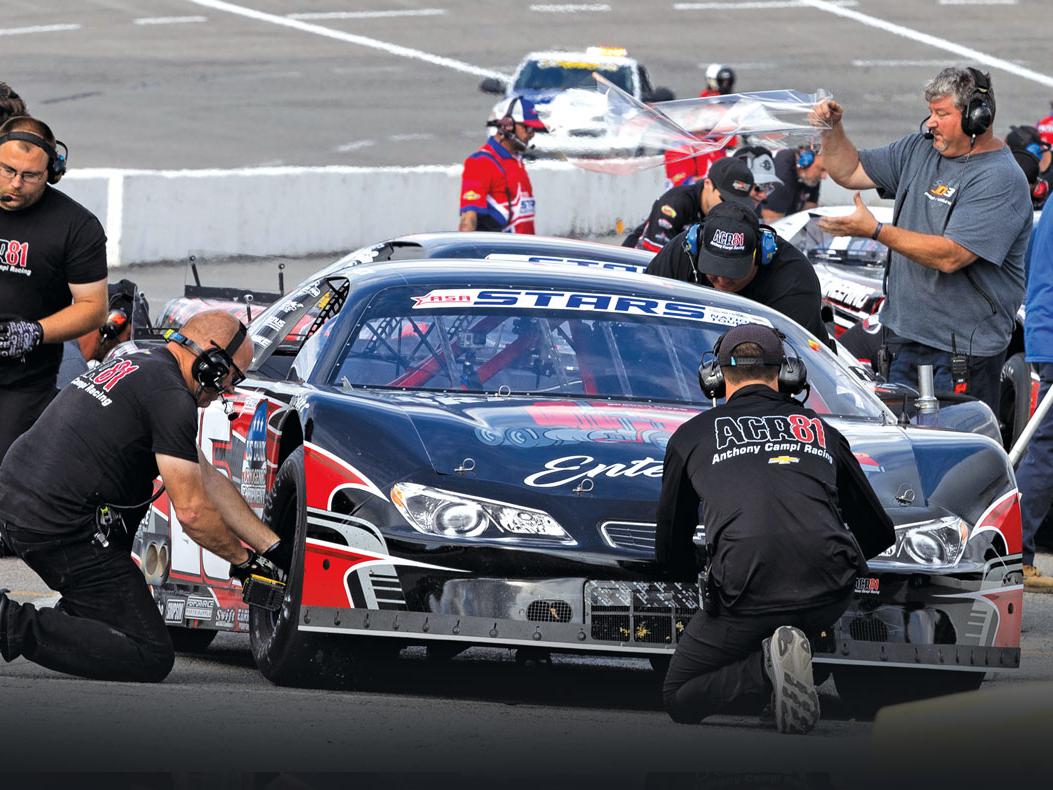Show & Go: Big Wheel Drag Racing
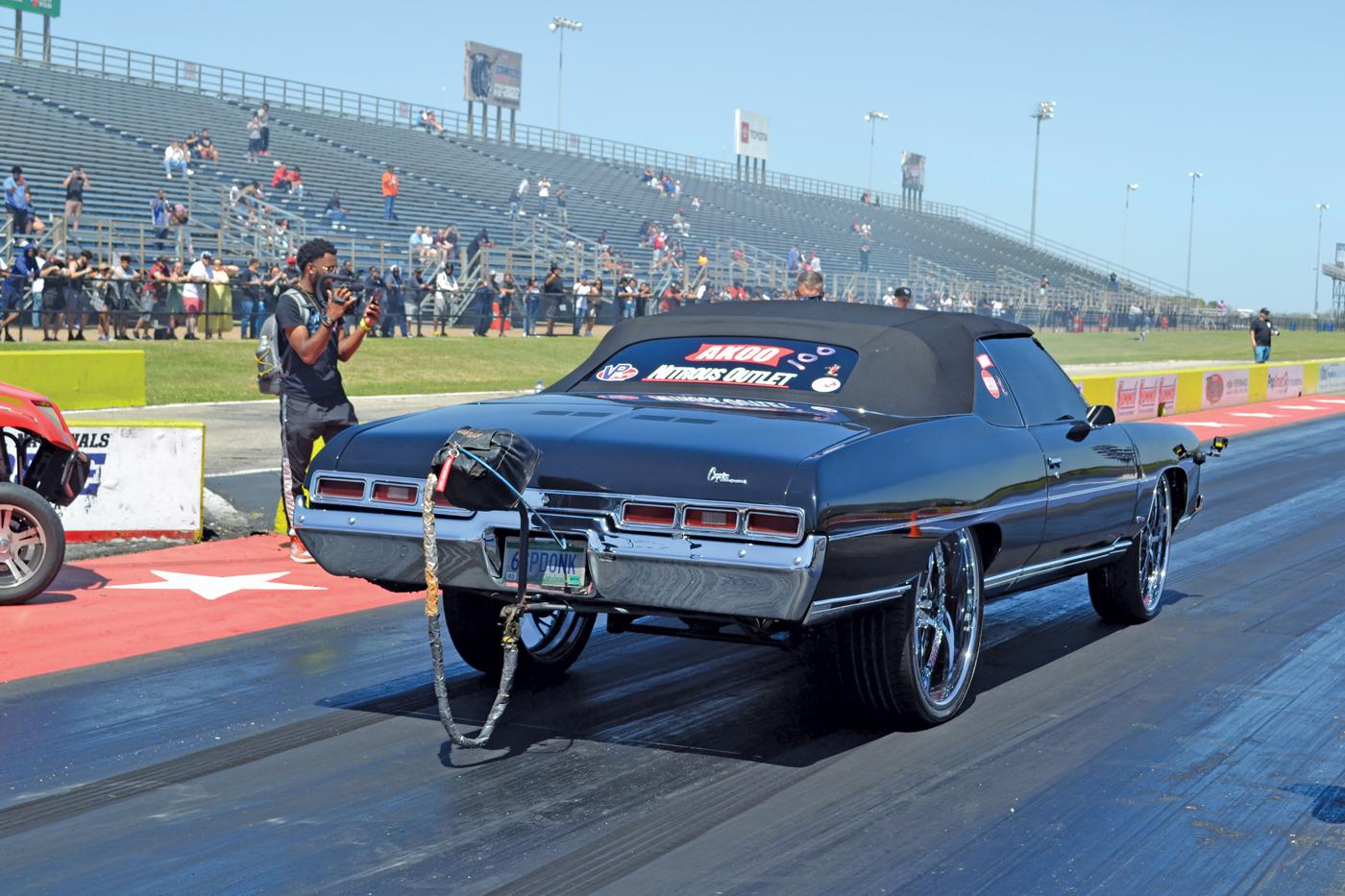
Thanks in part to a rapidly developing aftermarket, these purported show cars are bringing some serious
hustle to the drag strip.
Initially dismissed by some as a drag racing anomaly, the Big Wheel scene has picked up significant momentum over the past few years. The level of performance that some of these cars are capable of today is truly jaw-dropping.
Before we dig into the factors that have helped this segment mature into what it is today, we should probably have a look at the terminology involved and address some common misconceptions. Perhaps most importantly, “Donk” denotes 1971–1976 Chevrolet Caprices and Impalas with wheel diameters of 22 inches or larger (though many in the scene still use the term “donk” to refer to all of the cars that make up the phenomenon). Meanwhile, a “Box Chevy” represents the third-generation Caprices and Impalas that were produced from 1977–1990 on similarly sized wheels, and the fourth-generation car—produced from 1991–1996—is called a “Bubble.”
Although these General Motors platforms represent the vast majority of the cars in this segment, GM G-bodies as well as a few Fords and Mopars have found their way into Big Wheel racing as well. It’s a scene that has matured in a familiar hot rodding tradition: After a distinct style was established, builders soon focused their efforts on performance. And as competition started heating up on the street, the folks with the fastest machines began looking at ways to bring their cars into formalized racing venues.
“The Big Wheel thing has been around since the late 1990s,” said Sage “Donkmaster” Thomas of the National Donk Racing Association (NDRA). “A few years later, social media platforms, YouTube, and publications like Rides magazine started to bring a lot more awareness to it.” As interest ramped up, Thomas and others saw an opportunity to bring Big Wheel racing to a larger audience in a more organized setting, resulting in the first annual Fast and Flashy car show and race event at South Carolina’s Darlington Dragway in 2015.
“The idea was to move the racing from the street to the race track,” Thomas said. “At that point, the cars were probably running in the low 11s, high 10-second range. These were street cars with full interior, sound systems, air conditioning—all of it. Guys were running combinations like turbocharged LS engines and big blocks with multiple stages of nitrous, but the cars weighed about 5,500 pounds, and they were running tires that weren’t made for the drag strip.”

Those circumstances are actually part of the appeal of Big Wheel racing, said Glen Nichols of G Kustoms in Fort Worth, Texas. “When you don’t have readily available resources, it makes things a little more interesting. Initially it was about making a big body car as fast as something like a Camaro ZL1 or a Hellcat. Once everyone was able to do that, they moved on to the next challenge—proper race cars. At those first events, a lot of guys were running big wheels on the front and traditional slick setups on the rear, and Donkmaster is the only one that I can recall that was racing on rims. That forced everyone to adapt to that. He proved that you could make a car fast that way. So if you weren’t doing that, you were basically taking the easy route.”
Fast forward to 2023, and Big Wheel cars are now delivering performance that’s raising some eyebrows. Although grudge racers aren’t keen on offering specifics when it comes to ETs, many estimate that today’s quickest machines are capable of knocking out consistent sub-9-second quarter-mile times. This considerable improvement comes not only from the refinement of combinations and swelling horsepower levels, but also increasing aftermarket support and a greater understanding of how to effectively integrate advanced drag racing technology into these cars.
Motorsports Meets DIY
Tom Vigue of 3V Performance in Denver, North Carolina, said that although Big Wheels might appear to have wild suspension setups in order to accommodate these large-diameter rollers, that’s not really the case. “The guys that are running factory chassis will remove the inner fenders, the wheel tubs, and things like that, and then they restructure the body around the wheel. The cars aren’t lifted—if anything we like to drop the cars. They just look like they’re lifted because the diameter of the wheel moves everything up.”
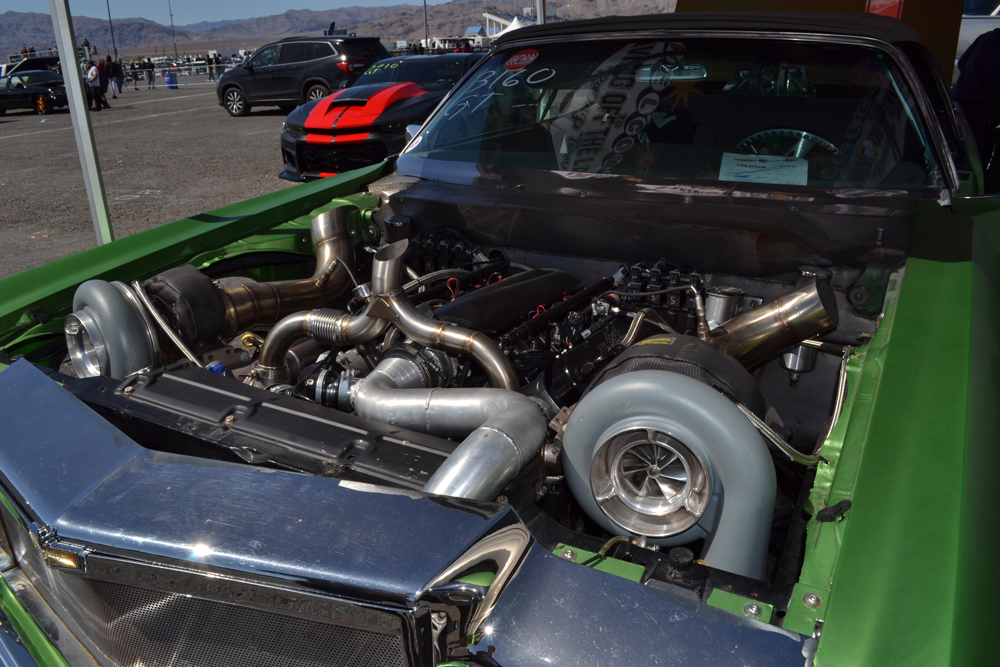
That keeps things fairly conventional underneath the car, which allows those racers to bring in some familiar drag racing hardware. “They’re using things like ladder bars, four-links, and bolt-on front suspensions to get more travel at the nose of the cars,” Vigue continued. “One of the bigger challenges we face, particularly with the donks, is that they carry a lot of nose weight because they’re so long. Getting that weight to transfer to the back on a tire that’s got a limited contact patch is difficult. It’s very hard to get the car to work correctly, but it can be done.”
Nichols told us that one of the early breakthroughs in the Big Wheel scene was QA1’s introduction of a purpose-built suspension kit for 1977–1990 GM B-Bodies. “In 2015, nobody had any kind of kits for big body cars. When this came out, I decided to just try something. I’m always interested in seeing what’s possible, and what needs to change in order to make something work somewhere else. I discovered that the kit would work on a donk, and it also pulled the wheel in an inch, which was a bonus because it provided more clearance for the bodywork.” Although that older platform wasn’t officially supported at the time, QA1 soon expanded the kit lineup to include support for both older and newer generation GM B-bodies. Suddenly Big Wheel racers had a proven, readily available suspension setup that would make it much easier to put the power to the ground.
He also noted that companies like Roadster Shop and Speedtech Performance have developed purpose-built chassis for these cars, but many Big Wheel racers are hesitant to use solutions that fundamentally change the vehicle. “It’s a huge advantage, but it kind of goes against the spirit of this type of racing. You have a body that looks like that car, but everything underneath it is something totally different. Nobody wants to race against a car like that,” added Nichols.
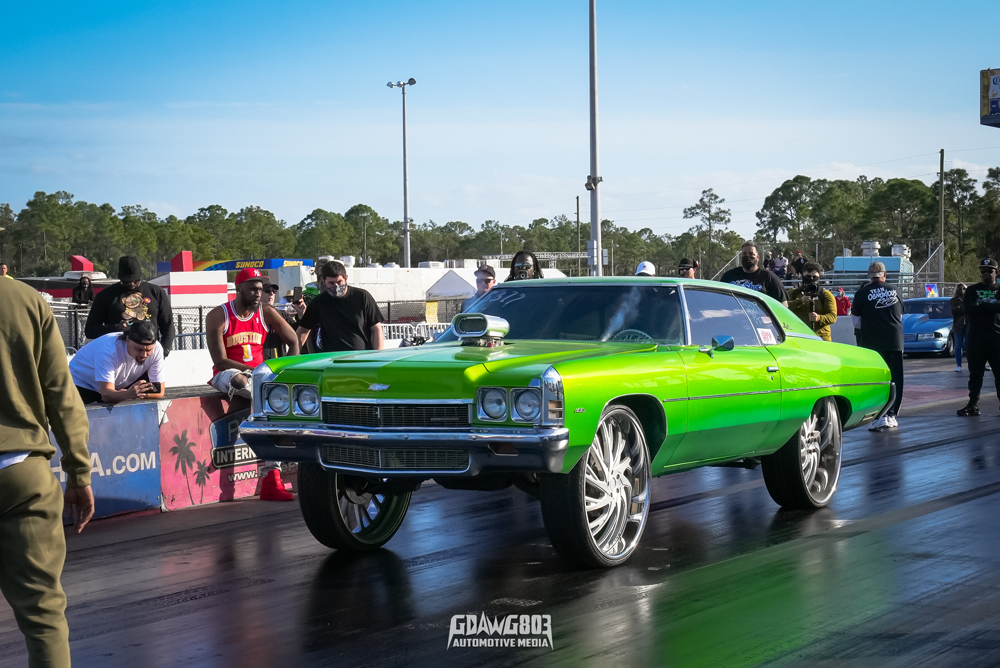
But as Garvey Yeldell of GDawg803 Automotive Media pointed out, like most motorsports disciplines, the fastest racers in the Big Wheel scene tend to use every advantage they can get. “At this point, some of these are basically purpose-built drag cars with big wheels. People are doing full fiberglass bodies now. There weren’t a lot of parts available for this when we first started, but that’s changing.”
Much of that development can be attributed to Thomas’ efforts to connect with manufacturers. “In the beginning we had to make a lot of parts, so I sat down with a number of big companies with the help of SEMA and PRI,” he explained. “Going to these events provided an opportunity for these companies to see what we were doing and how much excitement there was behind it. We were making extended trailing arms and cutting up control arms to make it work. Now you can just go on the Internet and order what you need. QA1 helped a lot with that, along with FTI Performance, which developed torque converters and transmission gear sets that are dialed in for this kind of car. Moser also developed a stronger Positraction unit and beefier gears. When you’re trying to launch a 5,500-pound car with over 1,000 hp, you need all the strength that you can get.”
A thousand horsepower is becoming increasingly pedestrian by today’s Big Wheel racing standards. “We just set the record with one of the engines that we did for Boost Doctor,” said Vigue. “At 2,350 hp, it’s the most power produced at the tire with a hydraulic roller cam. The problem is, most of these cars can’t access all of that power on these tires at the track.”
He said that many racers dial things back to between 1,500 and 2,000 rear-wheel horsepower. That’s still a whole lot of grunt to put down with this type of tire, though, which is why data acquisition and the traction control features in ECUs like the Holley Dominator system have become prevalent in the upper tiers of the sport. “It’s actually pretty similar to the strategies you’d find in no prep setups,” Vigue continued. “You do everything you can to get the weight on the rear tire and hold it there and apply the power as smoothly as you can. It’s a lot of the same stuff; it just needs to be massaged for this type of application.”
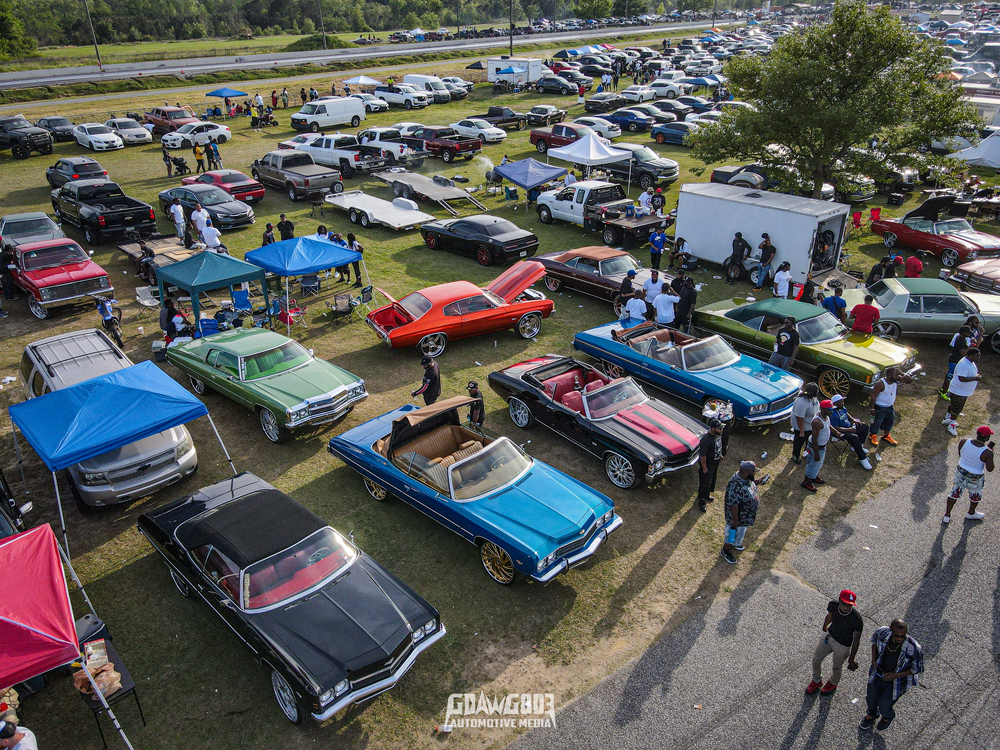
Tires are one aspect of Big Wheel racing where purpose-built options remain essentially nonexistent. Yet as they have in the past, racers are creating their own solutions. “There’s a gentleman who goes by the name Black Flag who has developed a 24-inch slick,” said Yeldell. “At first there were just a handful of people that had those tires, but now there’s so many out there that they’ve created a class just for the cars that are running them.”
Going Legit
Today there are numerous annual Big Wheel racing events held in various regions of the nation throughout the year, and the NDRA has played an important organizational role not only in defining car classes within Big Wheel racing, but also instilling the importance of proper safety equipment.
“These started out as show cars with big motors in them,” Thomas said. “But when you go from 11-second quarter-miles to sub-9 seconds, safety has to become a big part of it, especially when you’ve got cars running that fast on big wheels. So we had to add things like roll cages, driveshaft loops, engine diapers, along with simple things like kill switches, up-to-date racing harnesses, and fire-suppression systems.”
Vigue said that safety has come a long way in Big Wheel racing in recent years, and that change has helped to bring the competition to a wider group of enthusiasts. “Even just a couple of years ago, a lot of these cars didn’t have much more than a basic roll bar in them, but we’re beginning to see full cages becoming the norm. Now the NHRA is starting to put on some exhibition races with these types of cars, and that’s bringing this style of racing to a whole new fan base.”
Today the NDRA has three core classes—Lightweight, Middleweight, and Heavyweight—for donks and G-body vehicles. Cars are largely classed by the power adders used and level of race prep. Donks must run a 26-inch wheel diameter at minimum, while G-bodies can run 24-inch wheels. Cars that don’t fit into these categories also have a place to compete in the Open Class. “That could be a Bubble Chevy, a truck, a Dodge Charger on 24s, or a new Camaro on 24s. It could be a Tesla,” said Thomas. “Anything that isn’t a donk or a G-body can run in that class. It just has to have 22-inch wheels on it.”
Looking ahead, Thomas expects to see Big Wheel racing proliferate outside of the US in the coming years. “These cars are already popping up in Canada and Mexico, and we’re starting to see a lot of interest in countries like Japan and Dubai. People are building cars out there, and they want to get into Big Wheel racing. I think this is going worldwide.” He also envisions a class dedicated to 25.5-certified tube chassis cars in the not-too-distant future.
Vigue said that the Big Wheel segment’s expansion into faster and faster racing seems inevitable. “I see Big Wheel racing becoming more of an amateur, semi-pro, and pro division type of thing. And I think there needs to be a full-blown, Pro Stock car-style class. But what’s happening right now is already pretty incredible. These cars are extremely fast. If they showed the times on the boards, people would definitely be surprised.”
SOURCES
3V Performance
3vperformance.com
G Kustoms
instagram.com/g_kustoms/
GDawg803 Automotive Media
gdawg803.com
National Donk Racing Association
ndrausa.com
 MEMBERSHIP LOGIN
MEMBERSHIP LOGIN JOIN PRI
JOIN PRI
